Flowers are all around us and we see them blooming in the daylight where ever we go.
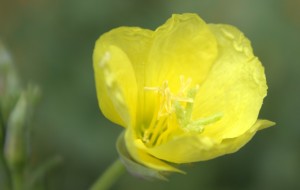
Pollinators like bees, wasps, ants, butterflies and birds visit them helping our flowered friends make their seeds for sprouting of the next generation.
Most flowers are open during the day and pollinated by daytime visitors. Leave it to Mother Nature to throw a few exceptions to the rule.
Evening primrose is one of the exceptions as its flowers open up at twilight. Weird, right?
Four pale yellow petals are large and together form a cup-like flower during the day. At twilight the flowers are wide open. The petals have wide shallow notches so that they look a little like hearts.
If you watched one long enough in the morning, you’d be able to see the petals fold in toward the center of the flower as it closes up. Each blossom only lasts for one night.
They open up at twilight of the previous evening and must be pollinated by night-active critters in addition to the ones that stop by the pretty blooms in the early mornings.
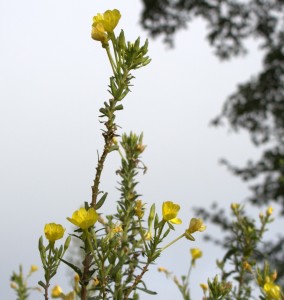
Even though individual flowers last for only one day, the whole evening primrose plant may bloom for a couple of weeks, depending on age and size, from June through September.
Common Evening Primrose, Oenothera biennis, is one of those flowers that is beautiful singly or in pairs, as it likes to blossom in doubles.
The tip of each plant shows the promise of future flowering with a cluster of flower buds and it shows past flowering with seed pods developing where pollinated flowers dropped off.
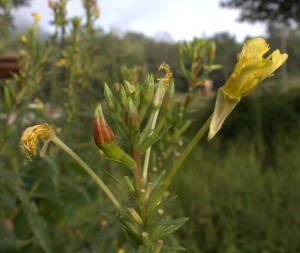
(Click on any image to see a larger view.)
Note the last-blooming, faded flowers. Each has a long calyx, like a flower “stem”, the base of which will transform from the ovary into a seedpod.
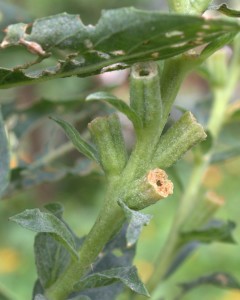
The plants that were photographed here on August 23rd were first noted on August 2nd. Seed pods were present on the stems at that time meaning they had already bloomed for several days.
How To Know Common Evening Primrose
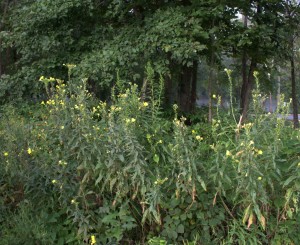
First of all, it has a rather weedy appearance. The times we usually see it the blossoms are fading away or curled up and falling off the plant.
Note: If you’re into gardening and enjoy the chiffon yellow blossoms, a better choice would be another primrose called Sundrops, O. fruticosa, which blooms during the day.
Secondly, the plant can range from 2 to 6 feet tall when it’s in bloom.
Other characteristics used to identify Common Evening Primrose are –
- alternate, lance-shaped leaves
- leaves slightly toothed or wavy-edged
- yellow flowers 1-2 inches wide
- broad petals with indentations at the tip
- cross-shaped stigma
- long calyx tube
- seed pods 4 times longer than wide
The evening primrose can still be found blooming as it shows off the lemony yellow flowers from June through September.
Look for it in open, dry or sandy areas such as the edge of fields and along roadsides.